Ever since the Suzuki GSX-8S hit the market earlier this year it’s been nearly inevitable that a full-faired sports version would be hot on its heels and now Suzuki has unveiled exactly that at the EICMA show in Milan.
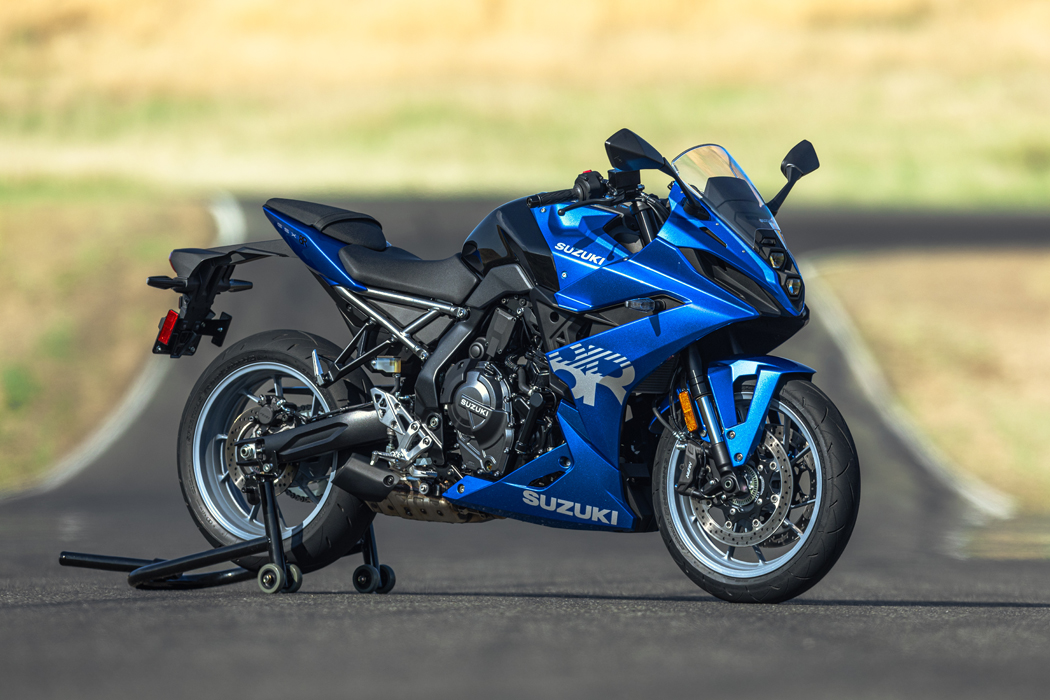
Hitting the market at Suzuki’s response to the Yamaha R7, the GSX-8R borrows its main mechanical parts from the GSX-8S including the 776cc parallel twin, putting out 61kW at 8.500rom and 78Nm at 6,800rpm and an identical steel frame with aluminium seat subframe. Even the wheels and brakes are borrowed from the GSX-8S, as is the rear bodywork and fuel tank.

But Suzuki hasn’t simply slapped a fairing on the GSX-8S and disappeared for an early lunch. The bars are lower, for example, and because the headlight, instruments and mirrors are mounted solidly to the fairing instead of the bars, there’s less mass in the steerable components, promising sharper responses.
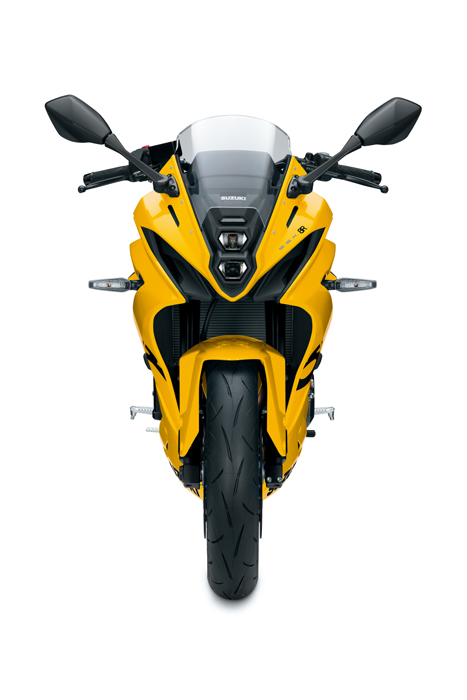
Those reactions will be sharpened still by the GSX-8R’s suspension. The GSX-8S uses a competent kit from KYB, but for the sports model it’s been binned in favour of higher-spec Showa components. Although still non-adjustable, the forks are Showa SFF-BP upside-downers, paired with a Showa monoshock at the back, with preload adjustment.

As on the GSX-8S, the peak power figure isn’t the big draw for the GSX-8R. Suzuki’s new parallel twin engine has proved to be smooth and responsive, thanks in part to the patented balancer shaft setup, with a level of low-down thrust that gives the impression of a more powerful unit. It’s still early in its development curve, so Suzuki has no doubt designed it with an eye to increasing its output in years to come.
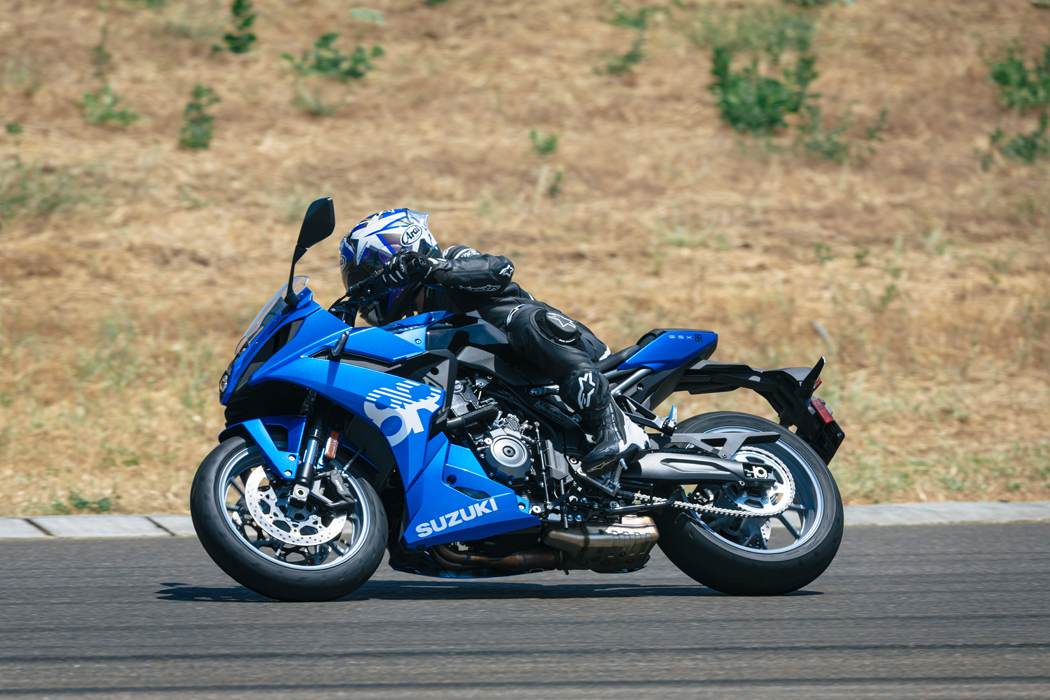
Like the GSX-8S, the GSX-8R has plenty of electronic trickery at its disposal, too, with a ride-by-wire throttle, multiple modes, a standard bidirectional quickshifter and three-level traction control. On board there’s a colour TFT dash, again straight from the GSX-8S, that includes a choice of display modes.

Even with the addition of a fairing, the GSX-8R still comes in at a reasonably lithe 205kg including fuel in the 14-litre tank. However, it’s expected to be diving into an increasingly competitive market segment, with rivals ranging from Aprilia’s RS660 and Yamaha’s R7 to Triumph’s expected Daytona 660, based on the Trident, which has already been spied testing. Meanwhile, China is also diving into the affordable sports bike market, not least with CFMoto’s upcoming 675cc three-cylinder 675SR sports bike and its four-cylinder 500SR, both expected to hit the market in 2024.
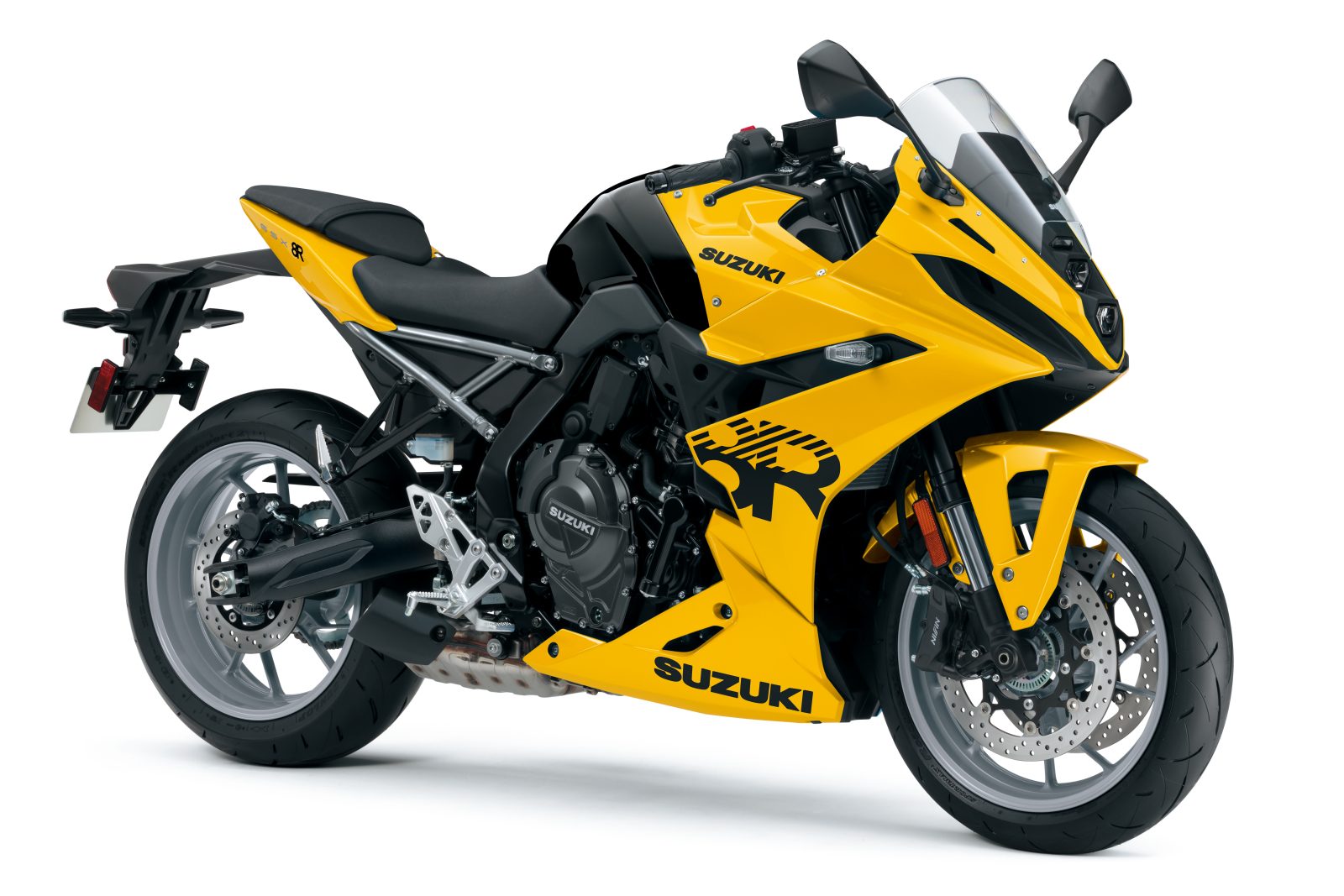
The GSX-8R will be available in Metallic Triton Blue, Pearl Ignite Yellow and Metallic Matt Sword Silver, and is expected to arrive in April 2024 with a ride away price of $14,990.

SPECIFICATIONS
| Overall length | 2,155 mm | |
| Overall width | 770 mm | |
| Overall height | 1,135 mm | |
| Wheelbase | 1,465 mm | |
| Ground clearance | 145 mm | |
| Seat height | 810 mm | |
| Wet Weight | 205 kg | |
| Engine type | 4-stroke, 2-cylinder, liquid-cooled, DOHC | |
| Bore x stroke | 84.0 mm x 70.0 mm | |
| Engine displacement | 776 cm3 | |
| Compression ratio | 12.8 : 1 | |
| Fuel system | Fuel injection | |
| Starter system | Electric | |
| Lubrication system | Forced feed circulation, wet sump | |
| Transmission | 6-speed constant mesh | |
| Suspension | Front | Inverted telescopic, coil spring, oil damped |
| Rear | Link type, coil spring, oil damped | |
| Rake / trail | 25° / 104 mm | |
| Brake | Front | Disc, twin |
| Rear | Disc | |
| Tyres | Front | 120/70ZR17M/C (58W) tubeless |
| Rear | 180/55ZR17M/C (73W) tubeless | |
| Ignition system | Electronic ignition (transistorised) | |
| Fuel tank capacity | 14 L | |
| Oil capacity (overhaul) | 3.9 L | |
| Fuel consumption | 23.8 km/L (4.2 L/100km) in WMTC | |
| CO2 emissions | 99 g/km in WMTC | |
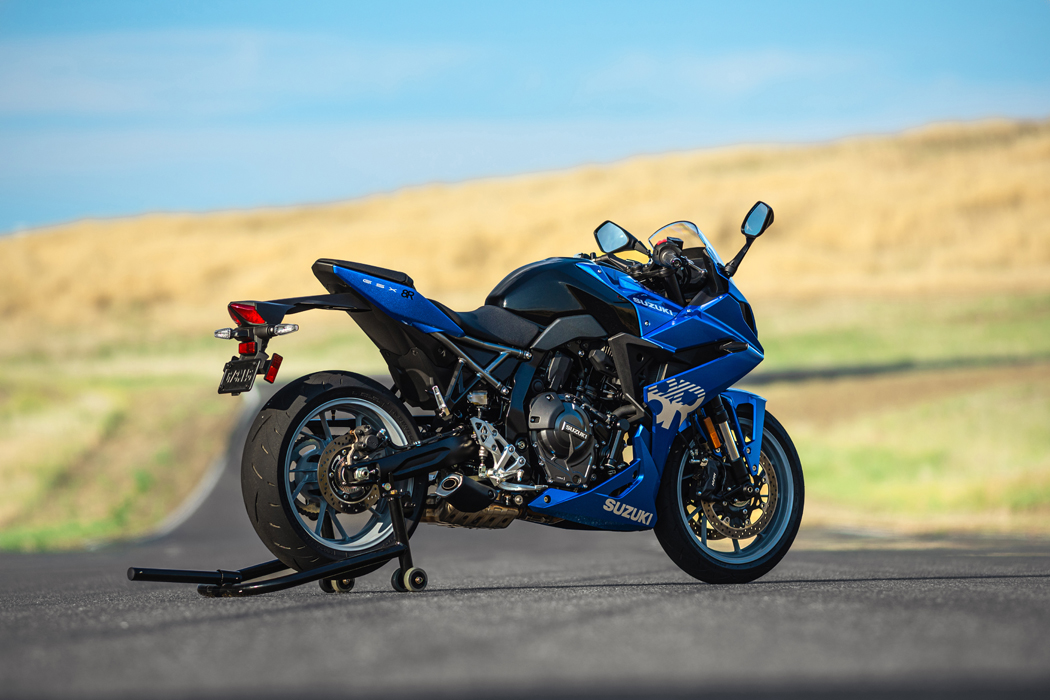
Ben Purvis











